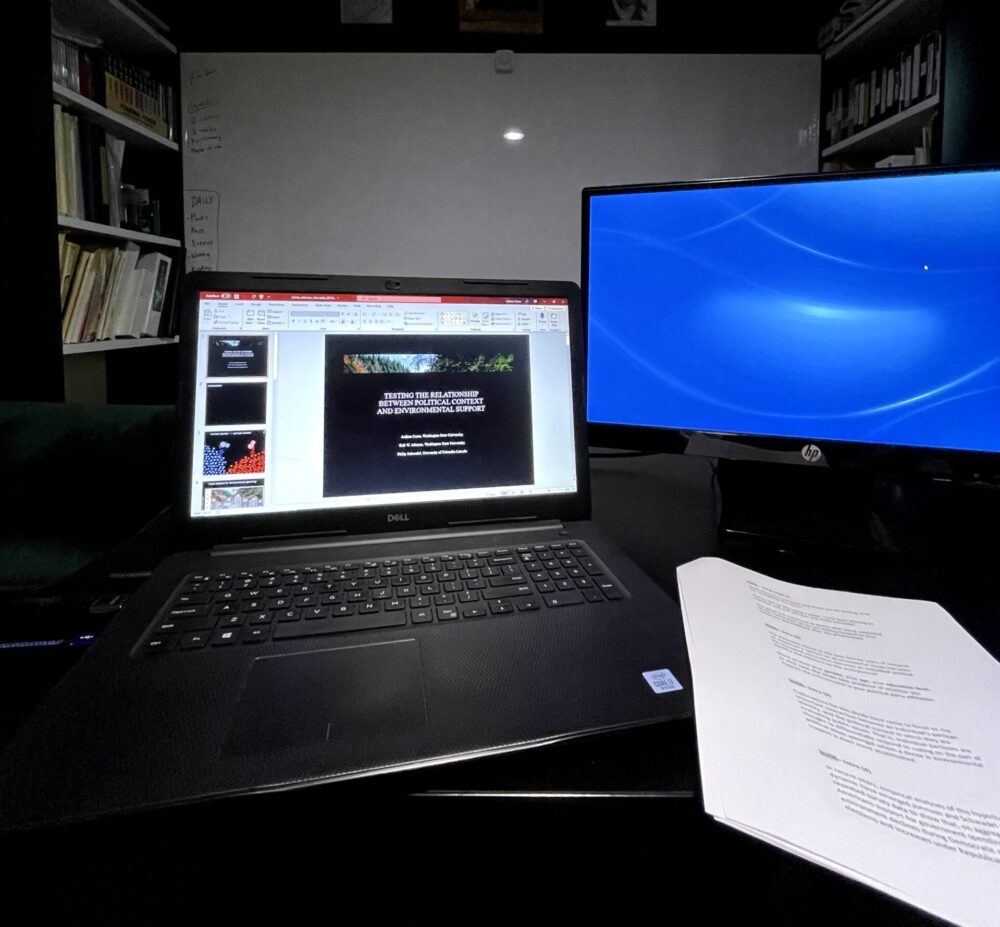For those of you who are curious to know a bit more about what makes me tick, here are three core values that I believe defines what makes me unique:
1. Holistic Thinking That Endures Through the Details
A lot of people can explain the big picture—the purpose of a class, a meeting, or a survey. But when it comes to actually doing the work, that bigger vision can easily get lost in the weeds. I’ve always made it a point to stay focused on the why behind every detail.
In a recent conversation with a senior academic, I was reminded that many early-career researchers are laser-focused on getting published and cited—but don’t always stop to ask what kind of impact their research is actually making. That resonated with me. Similarly, Don Dillman often reminded me that good science depends on good communication. If you can’t explain what your research is for—or who it’s for—it risks becoming meaningless.
So I try to ask myself, at every stage of a project: Is this actually helping us reach the goal? If I’m writing a survey, I think carefully about whether each question is essential. If I’m designing a final project for a class, I consider not just the course objectives, but how it might help students long after the semester ends.
This approach has shaped everything from my teaching to my consulting. At the SESRC, I worked closely with Thom Allen on projects where this mindset mattered. I also guest lectured in Lena Le’s graduate course on Survey Practicum, where I talked about why thinking holistically is essential to good survey design. And one of my favorite moments as an instructor was hearing from a student who landed a job, in part by showcasing the final project she built in my class.
(Continued below…)

2. Building Systems for Knowledge Sharing
This strength started as a workaround for something I wasn’t great at: memory. I’d learn a new programming language and forget the commands a week later, or read a paper and lose track of the methods. So I started writing things down—first for myself, then for others.
That habit grew into something bigger. At Washington State University’s Office of Strategy, Planning, and Analysis (OSPA), I created a range of resources to make our work easier to understand and repeat. I built onboarding guides, standard operating procedures, and data maps that explained where key files lived and how they were built—so future team members wouldn’t have to reinvent the wheel. I even made SOPs for SAS and SQL while learning them on the job.
Outside of formal roles, I’ve carried the same mindset. When I put together a codebook in Stata, I made it public—not just so others could use it, but so I could access it from anywhere without logging into cloud storage.
This same approach also led me to create and co-host the Total Survey Design podcast, where I break down survey research concepts for a wide audience—researchers, nonprofit workers, students, small business owners, and anyone curious about how surveys shape the world. The podcast is built on the same idea that’s shaped the rest of my work: knowledge becomes more powerful when it’s clear, accessible, and reusable.
Whether I’m writing documentation, designing course materials, or building platforms for public engagement, I try to make things understandable, replicable, and easy to build on. Dr. Coleen McCracken, my supervisor at OSPA, can speak to how this approach helped improve both our internal workflows and our ability to collaborate across departments.

3. Connecting the Dots Across Ideas, Fields, and Problems
Some of my favorite work comes from making connections that aren’t obvious at first glance. I like asking, “What if we applied this idea over there?”—especially when it leads to something useful.
In my dissertation, I explored how people’s belief in personal solutions to climate change might reduce their support for collective mitigation efforts. I was inspired by the concept of the “inverted quarantine,” which was originally created by Andrew Szasz to explain why bottled water became popular: if people think they can protect themselves individually, they might disengage from broader public action. When I applied that idea to climate policy support, not everyone was convinced at first—but the data backed it up. It turned out to be one of the strongest predictors in my study.
In a separate project, I used the Elo rating system—best known from chess—to help measure subjective preferences in survey research. I presented that work at the 2025 American Association for Public Opinion Research (AAPOR) conference to show how social scientists can use Elo to capture intersubjective rankings in a more dynamic and reliable way.
And in applied work, I’ve tried to keep this same mindset. At WSU, I developed the Student Basic Needs by Campus report, pulling together existing survey data to spotlight which campuses needed what kind of support. I linked findings to the actual capacity of different offices, so the recommendations weren’t just insightful—they were actionable.
At the core of all of this is curiosity and a drive to build bridges—between theories, disciplines, and real-world outcomes.
If you’re looking for someone who can bring structure to complex projects, ask the right questions, and design research that actually leads somewhere—let’s talk. I work best on teams that care about clarity, rigor, and making things that last. Whether it’s a short-term collaboration or a long-term role, I’m open to new projects where I can contribute thoughtfully and learn along the way.
If you’d like to learn more about my background, you can view my CV here. Or just shoot me an email—I’m always happy to connect and hear what you’re working on.
